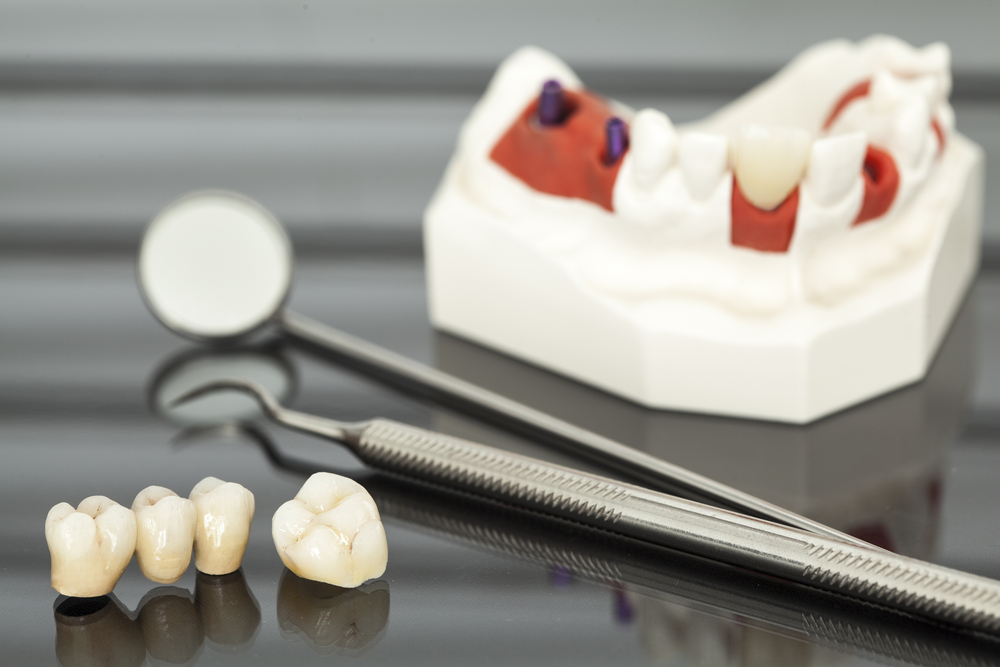A crown is a custom, lab-created "cap" that gives a tooth 360 degree-coverage.
What are crowns & bridges made of?
- Most patients choose to have tooth-coloured crowns, which are generally made of porcelain, porcelain-fused-to-metal, lithium disilicate, or zirconia. These materials are extremely hard and can often be “bonded” to your tooth. Some porcelain materials may chip or wear over time.
- In some cases, you may be offered a gold crown. Gold is an excellent material for restoring teeth as it’s easy on the gums and won’t chip away if you’re not concerned about the colour blending in with the natural teeth.
When are crowns are placed?
- If the tooth is not strong enough to support a large filling, such as after a root canal or if a tooth is broken.
- If the teeth are severely worn down and need to be restored to their original form.
- For certain types of cosmetic dentistry.
- On top of a dental implant to restore a missing tooth.
A fixed “bridge” is used to replace a missing tooth or teeth, by crowning the teeth on either side of the space and using those teeth to support a “fake tooth” (pontic).
Are there any downsides to crowns & bridges?
- Some types of porcelain crowns may chip or break over time, especially in patients that grind or clench. Wearing a night guard or bruxism appliance can help protect teeth and crowns.
- Whenever a large filling or crown is placed, there is always a 6% chance your tooth may need a root canal in the future.
- Teeth with crowns can still get cavities at the margin where the tooth meets the edge of crown. These cavities are most likely to happen in between the teeth, so regular home-care and regular in-office hygiene is crucial.
- Bridges can be tricky to clean underneath and require special floss-threaders or water piks.
- Over time, the gums may recede from the teeth, exposing the edge of the crown and making the transition visible, which can look like a dark line or discoloured tooth surface.
- On average, crowns & bridges will last 5-10 years before they may need to be replaced. However, many patients with good home-care and healthy diet can have these restorations for many decades.

<iframe width="560" height="315" src="https://www.youtube.com/embed/c9uwkBjTPDk" frameborder="0" allowfullscreen></iframe>